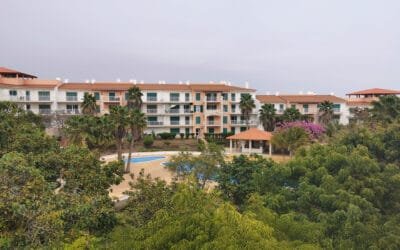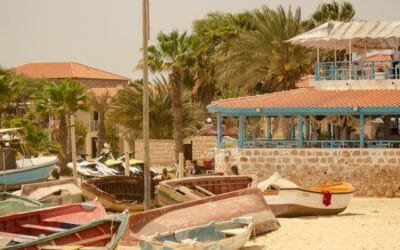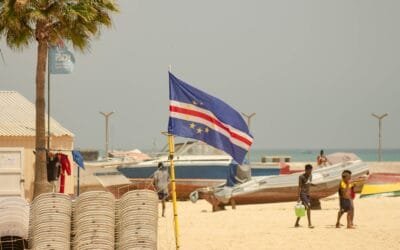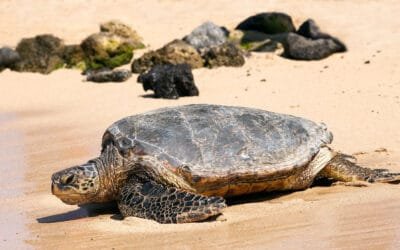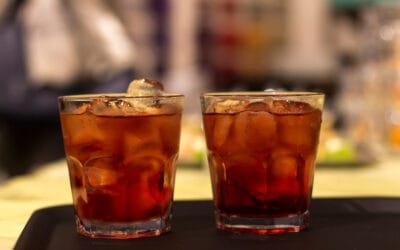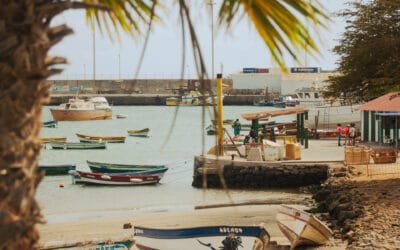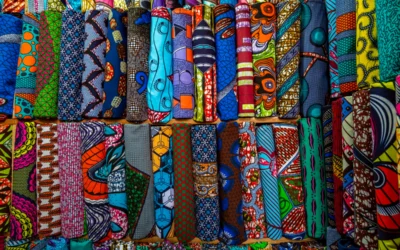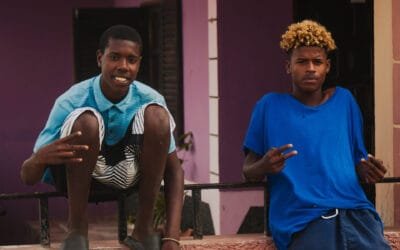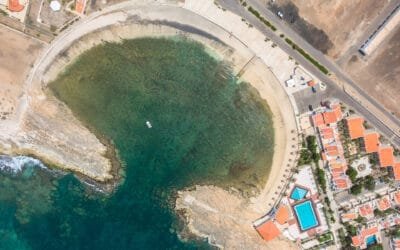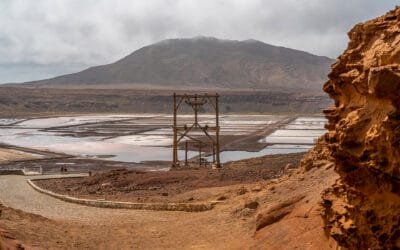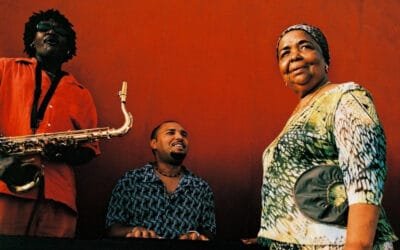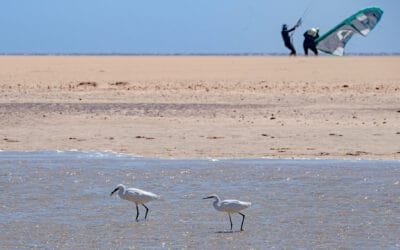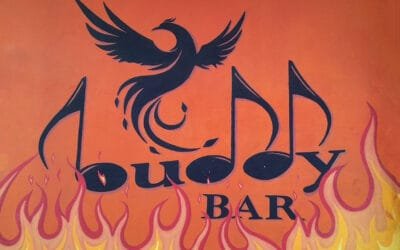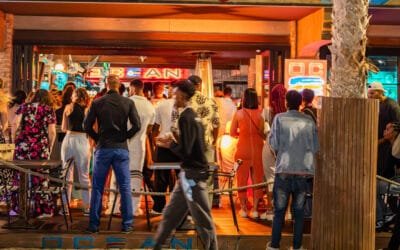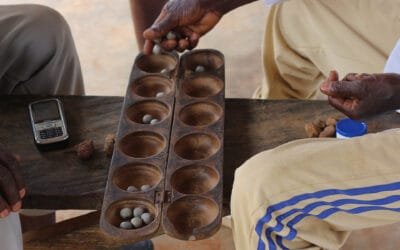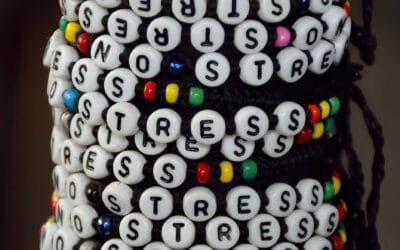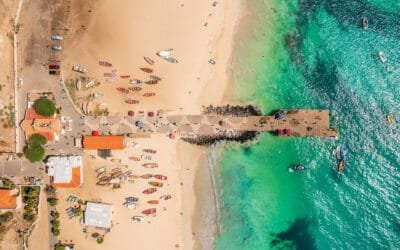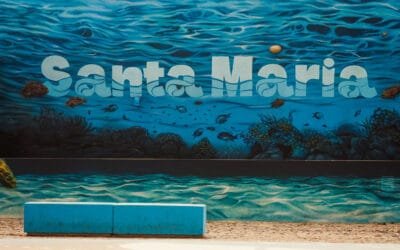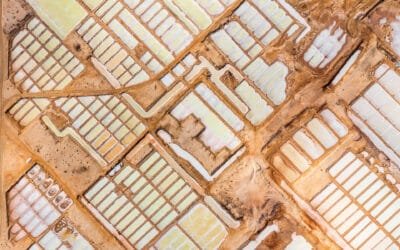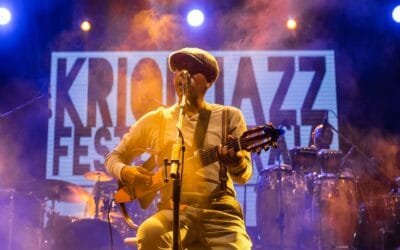Explore Sal Island
Quiet beaches, steady winds, chilled bars. Welcome to Cape Verde’s easy-going paradise. ARTICLESBOOKS & MORETHE OCEAN, SAND & SUN
“Paradise is when your mind is in a perfect state,” says Frederick Lenz, and that’s what Cabo Verde offers you — it’s as colourful as happy if you only discover its vibrant energy, natural beauty and great culture. The more you get to know the place, the more fascinating it gets. Explore the Island of Sal through this website, and see if you fall in love with what Sal can offer you.
New Articles
Where to Stay on Sal? The Best Options with Prices
Where to stay on Sal? The question presents itself immediately upon arrival at Amílcar Cabral International Airport. This easternmost island of Cape Verde, shaped by wind and salt, offers surprisingly diverse accommodation options across its compact 216 square kilometres. From the bustling town of Santa Maria, through the calm and quiet Vila Verde, to the island’s capital — Espargos; each area presents a different set of advantages for various types of travellers.
Santa Maria: Walk Through The Most Popular Town
Santa Maria is a coastal town at the southern tip of Sal Island in Cape Verde, renowned for its stunning white-sand beaches and year-round sunshine. Once a sleepy fishing and salt-trading village, it has transformed into the island’s central tourist hub, while retaining a laid-back charm.
Reasons for No Green in The Flag of Cape Verde
[pac_divi_table_of_contents allow_collapse_minimize="off" show_icon_in_toc_header="off" title_container_padding="10px|23px|10px|23px|true|false" title_container_bg_color="#000000" limit_content_height="off" body_area_text_link_underline="#FFCC00"...
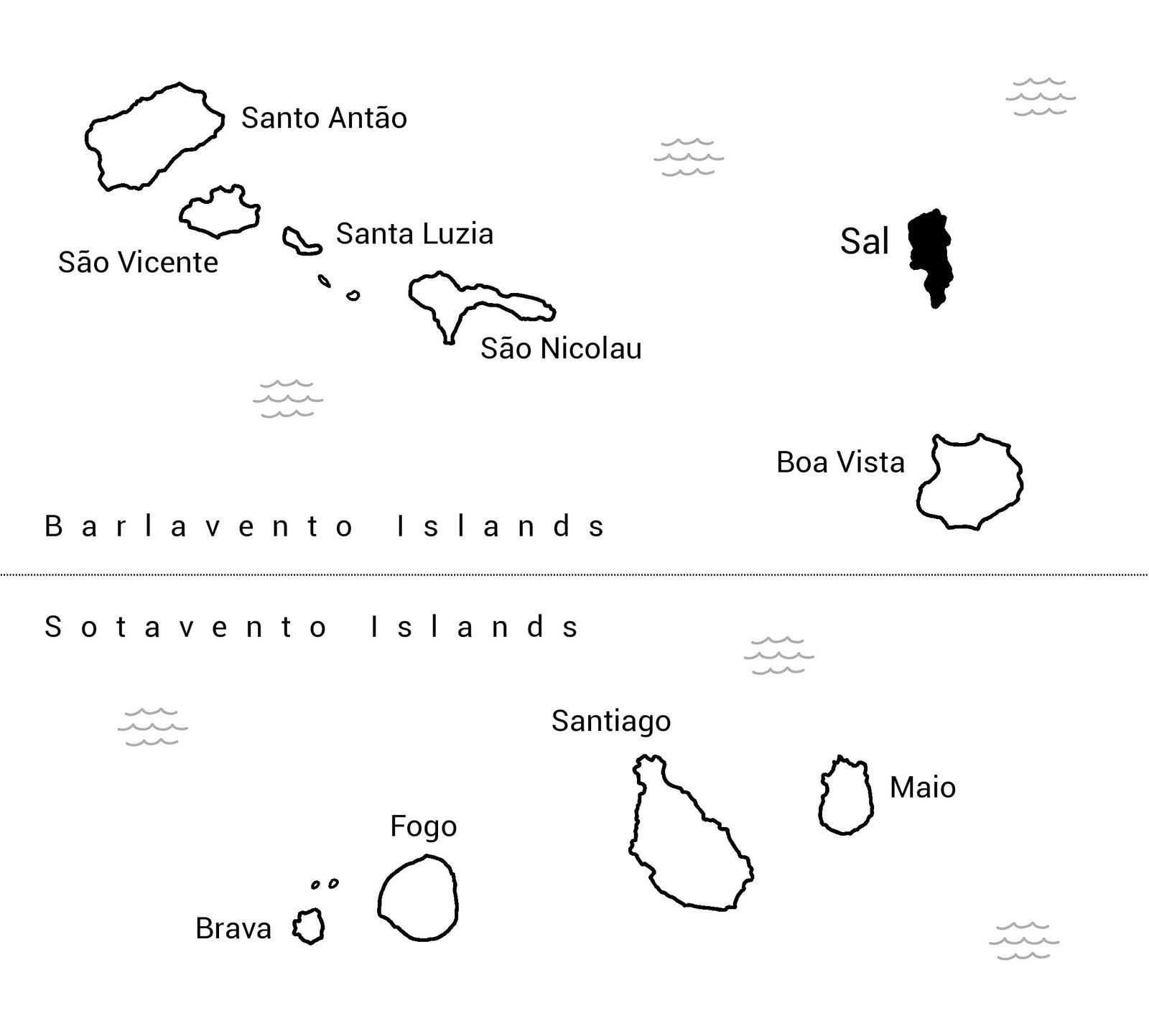
Understanding Cape Verde
An essential step towards truly understanding a country’s culture is diving into its history. Events from the past profoundly shape local customs, behaviours, and the community’s character. To see Cabo Verde beyond its image as a sun-soaked tourist paradise, you first need to get familiar with its past — learning Caboverdian history is your starting point. From there, the authentic beauty and richness of local life become genuinely visible. Explore our pages to discover more about genuine Cape Verdean culture, away from tourist clichés.
Explore
Loggerhead Sea Turtle: The Most Fascinating Guest on Sal
The loggerhead turtle (Caretta caretta) is a type of sea turtle known for its large size, distinct reddish-brown shell, and powerful jaws. They are among the largest sea turtle species, with adults reaching an average length of around 3.5 feet (1 meter) and weighing between 200 and 400 pounds (90 to 180 kilograms). However, some exceptional individuals can grow even larger.
Pontche: The Strong and Sweet Spirit of Cape Verde
Cape Verde may be best known for grogue. Still, its sweeter cousin, pontche, carries an altogether different reputation.
Palmeira: The Important Fishing Village of Sal
Tucked away on the windswept western coast of Sal Island, Palmeira is not the place you visit for palm-lined beaches or polished resorts.
The Most Popular Souvenirs to Look For in Cape Verde
Shopping on Sal is less about high-street brands and more about discovering local crafts, fresh produce, and Cape Verdean character.
Cape Verde: The Practical Guide with Essential Insights
Cape Verde: Nestled 600 km off the West African coast lie ten volcanic islands united in history, culture, and climate — yet each with its own character.
Murdeira Bay: Beautiful Reef and Rock Pools
Murdeira Bay, situated on the southwest coast of Sal, is a nature reserve known for its rich underwater sea life and a small coral reef.
Salinas Pedra de Lume: All You Need to Know about Salt Mines
Nestled within the crater of a dormant volcano on Sal Island, Cape Verde, the Salinas de Pedra de Lume weave a story of nature, ingenuity and transformation.
Morna: The Magic of Caboverdean Music and Dance
On a balmy evening on the Cape Verdean island of São Vicente. The gentle strum of a guitar and the plaintive voice of a singer spill out from a seaside tavern. Inside, couples sway in a close embrace, moving slowly to the languid rhythm of a morna. A song of love and...
Birds of Cabo Verde: The Most Popular Species
Cabo Verde is an ornithologists’ paradise. It is a fantastic place for birdwatching. There are many bird species here, both native only to the islands of the archipelago (and nowhere else) and many typically African and migratory species. Below is a list of over 20 bird species observed on Sal and the other islands. How many of them have you seen?
Buddy Bar: The Most Popular Music Spot on Sal
If you’ve been researching bars in Santa Maria, you’ve probably seen or heard Buddy Bar mentioned everywhere. It’s that characteristic, orange-colored corner building on Rua 1 de Junho that many travel blogs seem to rave about. But what’s the real deal with this place?
Ocean Café: Sensational For Its Good Music And Dance
Right in the heart of Santa Maria, facing the historic town square and just 50 meters from the beach, stands one of the important centres of local nightlife, Ocean Café.
How to Play Ouril: Rules of The Traditional Game
Ouril (also spelt ouri, uril, urim, or ori depending on the island) is a traditional Cape Verdean board game of the mancala family. It was brought to Cabo Verde by enslaved people from West Africa and has been passed down through generations. The game is especially popular among men, often played in public squares and port towns, such as Mindelo (São Vicente). In essence, Ouril is a two-player strategy game where each player “sows” seeds and captures the opponent’s seeds to gain an advantage. Below is a comprehensive guide in two parts: first, a beginner-friendly walk-through of rules and gameplay; second, advanced tips on strategy and regional variations (including notes on the island of Sal).
“No Stress”: Sad Truth Behind The Popular Motto
Is “No Stress” really a Capeverdean motto? If not, then where did it come from, and why is it so popular? Let’s answer these and more uncomfortable questions.
Digital Nomads: What’s the Best Place To Stay On Sal?
The rise of remote work is transforming Sal from a week-long beach destination into a viable base for location-independent professionals. However, success requires careful planning around the island’s infrastructure limitations and lifestyle adjustments.
Pontão: The Unique, Iconic Pier of Santa Maria
The sun breaks over the Atlantic at 10 a.m. Fishing boats return to Santa Maria. Their hulls paint the water in blues, reds, and yellows. Engines sputter and die as they approach the pier. This daily scene has played out at the Pontão for decades. The wooden pier does more than receive boats. It holds the rhythm of Cape Verdean life.
Street Art of Santa Maria: Beautiful Gallery of Murals
Thanks to Arte’d Zona and many local artists, the streets of Santa Maria became a stunningly colourful gallery of artworks. From realistic portraits and animals, through scenes from the island’s life and traditions, to abstract shape compositions, we can admire works painted by many young and older hands. On almost every street, the walls of buildings emanate a vibrant, positive energy.
Salt Flats of Santa Maria: Beautiful Mosaic in Sand
In the south of Sal Island, beyond Santa Maria’s golden beaches and resort hotels, lies a different kind of treasure – a broad, sunbaked expanse of inland salt flats. These salinas stretch out just north of Santa Maria town, their pale crust shimmering under the Saharan breeze. They are often overlooked in favour of Sal’s more famous crater salt lake at Pedra de Lume, but Santa Maria’s salt pans have a story all their own. It was here that the town of Santa Maria was born in 1830, founded expressly to harvest the “white gold” of salt. Today, the salt flats are quiet and mostly dry, visited occasionally by wading birds and curious tourists. However, they remain a poignant landscape – a protected site of ecological interest and a living monument to the island’s history. This article explores how these inland salt flats once fueled Santa Maria’s early growth, what has become of them since the salt trade ebbed, and how the local community regards the salinas in the present day.
Kriol Jazz Festival: The Bridge To The World
Each April, in the city of Praia on Santiago Island, a quiet transformation occurs. You can sense it not just in the tide or the slow heat that settles over Plateau, but in the clatter of instrument cases, the hum of tuning guitars, and the faint rhythms spilling from...

